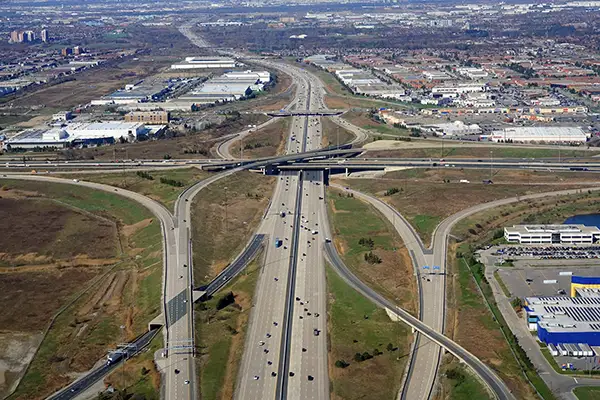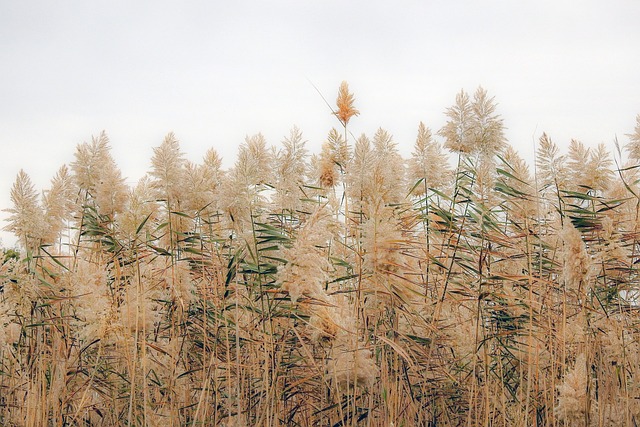
How to Solve the Invasive Species Problem Along Highway 407 ETR
27 of July of 2023
Usually, road interconnectivity is a good thing.
A strong road network connects people not only to each other, but also to education, health care, employment, entertainment, and other economic and social opportunities.
But humans aren’t the only ones who travel on roads. Invasive species do, too.
In fact, in Ontario, Canada, a non-native perennial grass called invasive phragmites has found its ideal habitat along the drainage ditches that border most roads.
Invasive phragmites have spread so quickly and so successfully that they now pose a serious threat to the local terrestrial and aquatic wildlife, including one-quarter of Ontario’s at-risk species.
407 ETR is tackling this problem head-on with its 407 ETR Highway Corridor Biodiversity Pilot Project, which aims to develop a healthy, ecologically sustainable and biodiverse landscape where native species, such as the beloved monarch butterfly, can survive and flourish.
The first stage of the project is perhaps the most complex: finding the best ways to eradicate invasive phragmites.

The first stage of the project is perhaps the most complex: finding the best ways to eradicate Phragmites.
Invasive Phragmites: A Formidable Enemy
Phragmites are a prime example of invasive species. These plants, which look like tall reeds, have no natural competitors in Canada, so there is nothing to keep them in check. Their populations currently run rampant in Ontario, forming large, dense monocultures where nothing else can grow.

Phragmites, image by Dimitris Vetsikas at Pixabay
These plants have become so common that many people in the Greater Toronto Area don’t realize they are invasive. They seem like part of the natural landscape, but in reality they are actively destroying it.
You can get a good view of large phragmites populations as you drive along the local highways. In fact, the reed grasses have the potential to become a safety hazard if left uncontrolled. They can grow so high (up to 16 feet or five meters tall) that they can impede sight lines, and they can expand so much as to clog storm culverts and drainage ditches, which could lead to road flooding if left unchecked. To ensure road safety, the 407 ETR Highway Operations team maintains all the vegetation along Highway 407 ETR.
But there’s something even more alarming happening below the ground.
The species has an extremely dense root system that can be several feet thick. (Take a moment to think about that!) The roots are packed so tightly together that they form a mat, preventing other plant species from growing and inhibiting already existing plants from getting nutrients from the soil.
And plants aren’t the only ones that are affected. Phragmites have a devastating impact on ecosystems, from degrading the quality of the soil to destroying many animals’ natural habitats.
Phragmites’ extensive root network also makes it very difficult to get rid of them. All the roots have to be completely cleared; if you only mow the stems that are visible above ground, new plants can grow again.
The species also spreads very quickly. Highways are ideal place for invasive phragmites populations to flourish and reproduce as the bordering drainage ditches provide the perfect channel for root systems to grow and pathways for seeds to spread.
Seeds can also spread through wind, or by hitching a ride. They stick to vehicle tires and equipment and get carried off to a new location, where they can fall onto the ground and start colonizing new areas.
The 407 ETR Highway Corridor Biodiversity Pilot Project
407 ETR has launched the 407 ETR Highway Corridor Biodiversity Pilot Project in partner with St. Williams Nursery and Ecology Centre. We’re making it our mission to help restore the natural habitats that have been taken over by invasive species.
The first step of the project is to eradicate the phragmites. We’re investigating a number of different techniques and working together with experts to weigh the pros and cons of each method.
We have selected four different locations along the highway where phragmites grow for the pilot project. One area is already partially restored, the second is an urban area, third is a wild, overgrown walking path, and the fourth and largest location is a wetland. We want to try the techniques in different environments to see what works best.
This is the starting point of a long-term project that will take place over several years.
Once we’re able to control the phragmites, we will replace them with native plant communities that will better resist the establishment and spread of the invasive species.
This will help to protect and enhance local biodiversity in terms of both plant and animal species, for a healthier, more sustainable natural environment.
The Importance of Working Together
At 407 ETR, we can only control the invasive species within our fence line and Rights of Way. Because of the invasive phragmites’ astounding ability to spread quickly and aggressively, we have to collaborate with partners on the other side of the fence to help control invasive species.
Otherwise, they’re just going to keep coming back.
We’re currently working to establish a voluntary committee with a number of different wildlife and nature conservation organizations. Our goal is to share knowledge from inside the fence and beyond the fence as our investigations and understanding progress and evolve.
We can only be successful fighting invasive species if we address the issue from all possible angles. By learning together and working together, we can help to restore the healthy natural habitats our planet needs.




1 comment
ele elica
02 of July of 2024
I'm excited about Heathrow Airport's new "Garden Gate"! It's such a refreshing idea to have a calming, plant-filled space for passengers at Gate 25 in Terminal 3. With 1681 plants including Peace Lily and English Ivy, chosen for their air-purifying qualities, it's both aesthetically pleasing and health-conscious. This initiative echoes the impressive vertical garden at Caixa Forum Madrid, which hosts 15,000 plants across 250 species. Vertical gardens like these offer environmental benefits, from reducing urban heat to improving air quality and biodiversity. It's great to see airports investing in green infrastructure! For more on vertical gardens, visit www.designerplants.com.